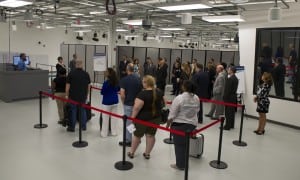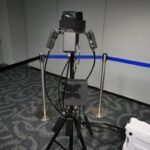
UPPER MARLBORO, Md.—Ongoing scenario testing of different processes and biometric modalities for verifying the identities of individuals entering and exiting through mock Customs inspection stations shows that some of the most critical factors in introducing biometrics into the departure process for foreign nationals at airports in the United States are the intuitiveness of, and clear instructions for, using the technology, as well as how to physically arrange biometric capture systems to enhance their effectiveness, an official with the Department of…

 By
By 











